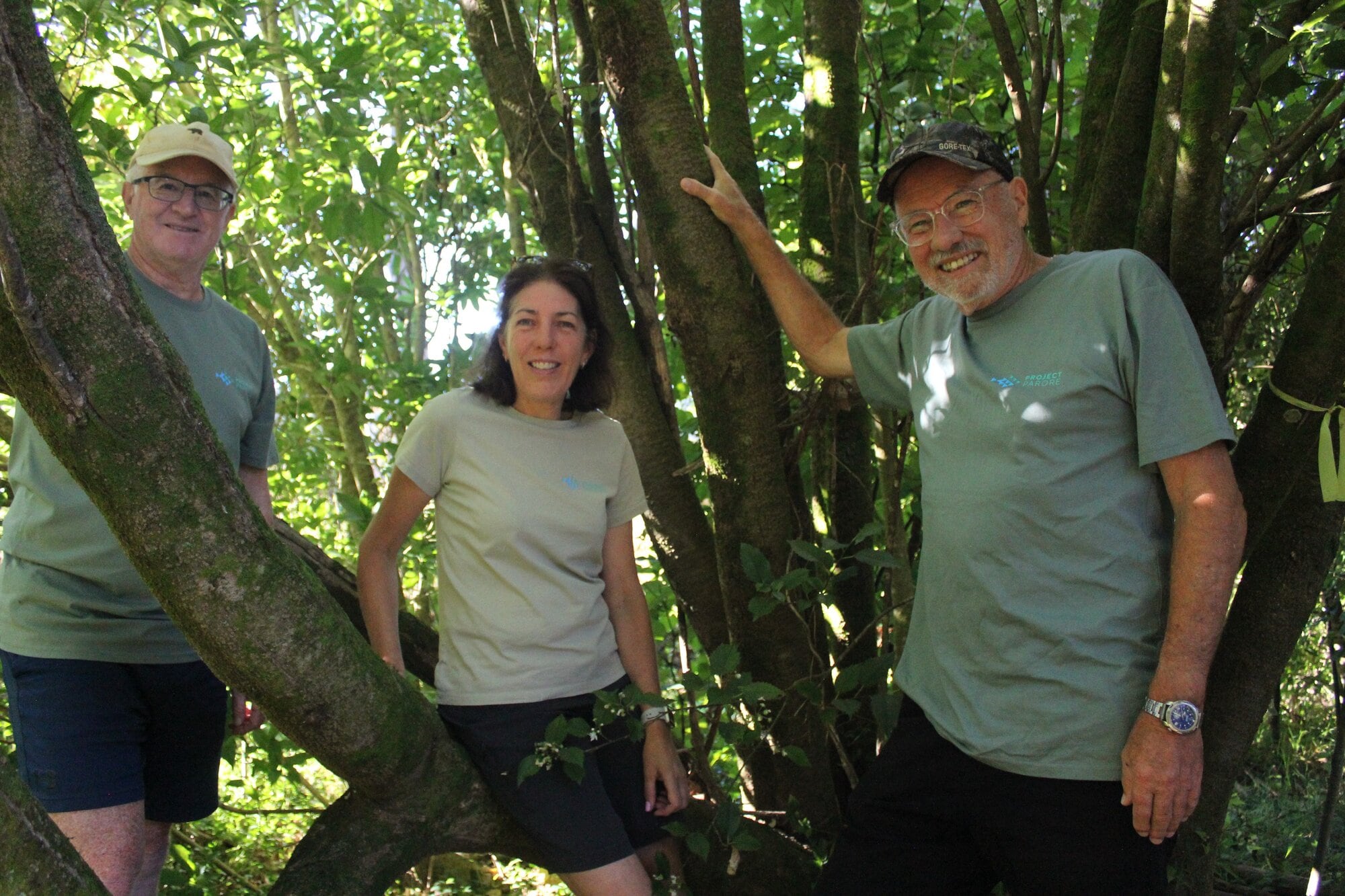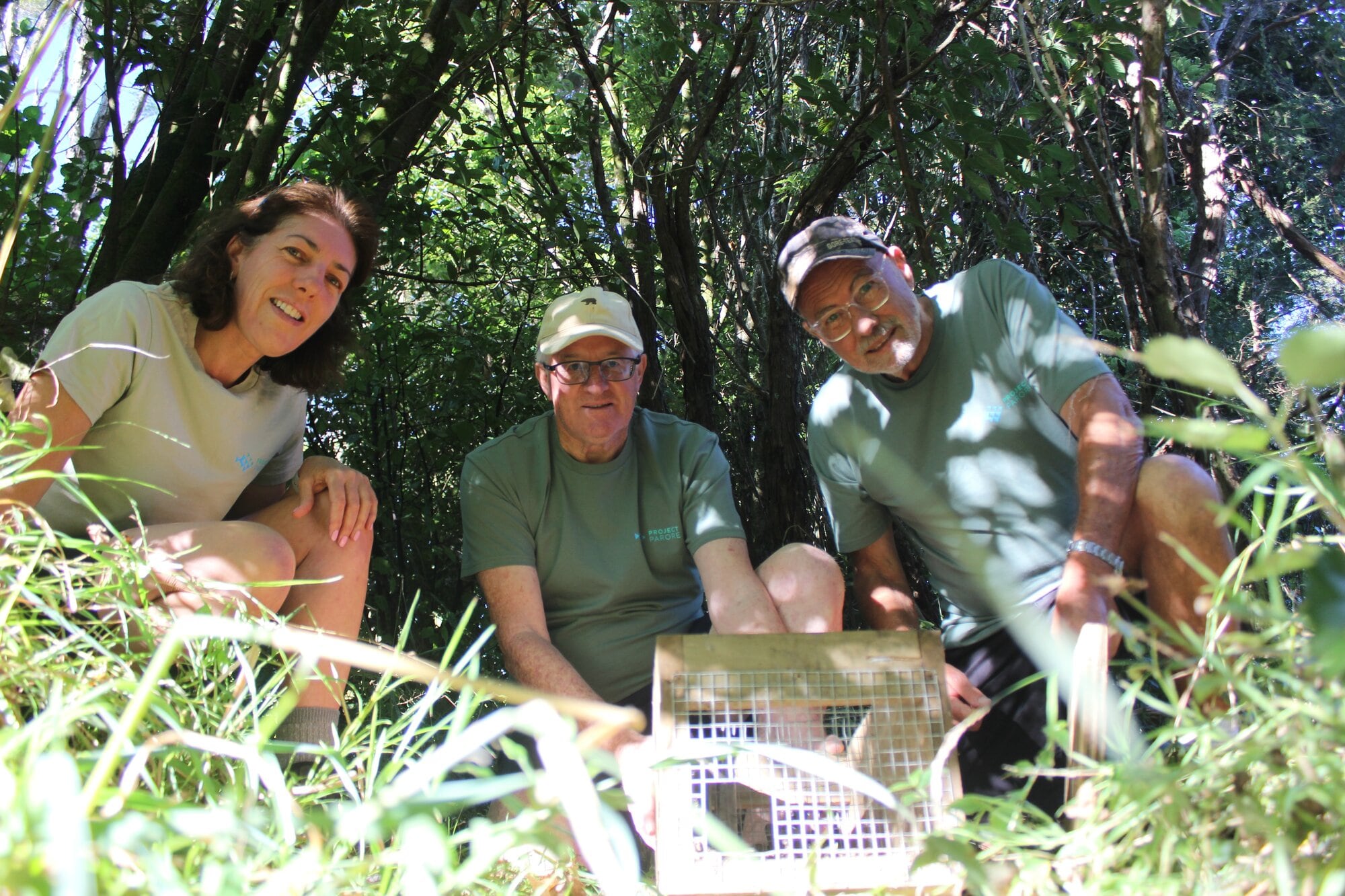A sighting of fish in Katikati’s Uretara River or native birds when walking the Haiku Pathway is a high-five moment for the volunteers working to remove invasive weeds and predators.
“We get super excited when, from time to time, we see a kākā here, or a kererū or ruru, and, just a few weeks ago, we were standing on the bridge and saw flounder,” said Sharon Strong, the coordinator of Renaturing Katikati, which is the urban arm of Project Parore. “This is exactly the reason we do this work.”
The group is into its seventh year of restoring the part of the river from the state highway bridge to the swing bridge.
“The change has been incredible,” said Strong. “We have photos that show erosion and pest plants like Taiwanese cherry and tree privet that were taking over the river – and now it’s been completely transformed through volunteer and community input.”
“I’ve been doing this for about three-and-a-half years, and we’ve seen whitebait in the water and pheasants nesting,” said volunteer Tony Salisbury.

Renaturing Katikati volunteer Tony Salisbury (left) with coordinator Sharon Strong and volunteer John Strongman. Photo / Debbie Griffiths
“I have an environmental background, so when I retired I wanted to do my part to improve the biodiversity for future generations in what is our community backyard.”
John Strongman moved to the Western Bay of Plenty town about seven years ago, and jumped on board as one of the original volunteers on the project.
“I’ve always been interested in native flora and fauna and I live on the river,” he said. “I do notice an increase in species like fernbirds and families of banded rail.”
Strong added: “Essentially, we’re trying to create a predator-free urban area for wildlife to thrive. About 18 volunteers look after traps and bait stations on Western Bay of Penty District Council parks and reserves and many, including students from our local schools, have helped plant hundreds of native plants and remove invasive weeds from the riverbank.
“About 18 volunteers look after traps, while about 50 have helped plant hundreds of trees and remove noxious weeds or pest plants from the riverbank.”

Uretara River that runs alongside the Haiku Pathway. Photo / Debbie Griffiths
Strong said the volunteers do a massive amount of work.
“Weeding is not the sexiest job, but they’ve put in hundreds of hours. We could not achieve what we do without them. They’re amazing.”
Local residents can support the work volunteers are doing by getting a trap for their backyard.
“Anyone who wants a backyard trap can contact me,” said Strong.
Salisbury added: “There really is a buzz of life down here by the river now. Being able to enhance the Haiku Pathway for the community to enjoy, and for the wildlife to come back, is very rewarding.”
To get a rat trap, contact Sharon Strong by email at: kea@projectparore.nz



0 comments
Leave a Comment
You must be logged in to make a comment.